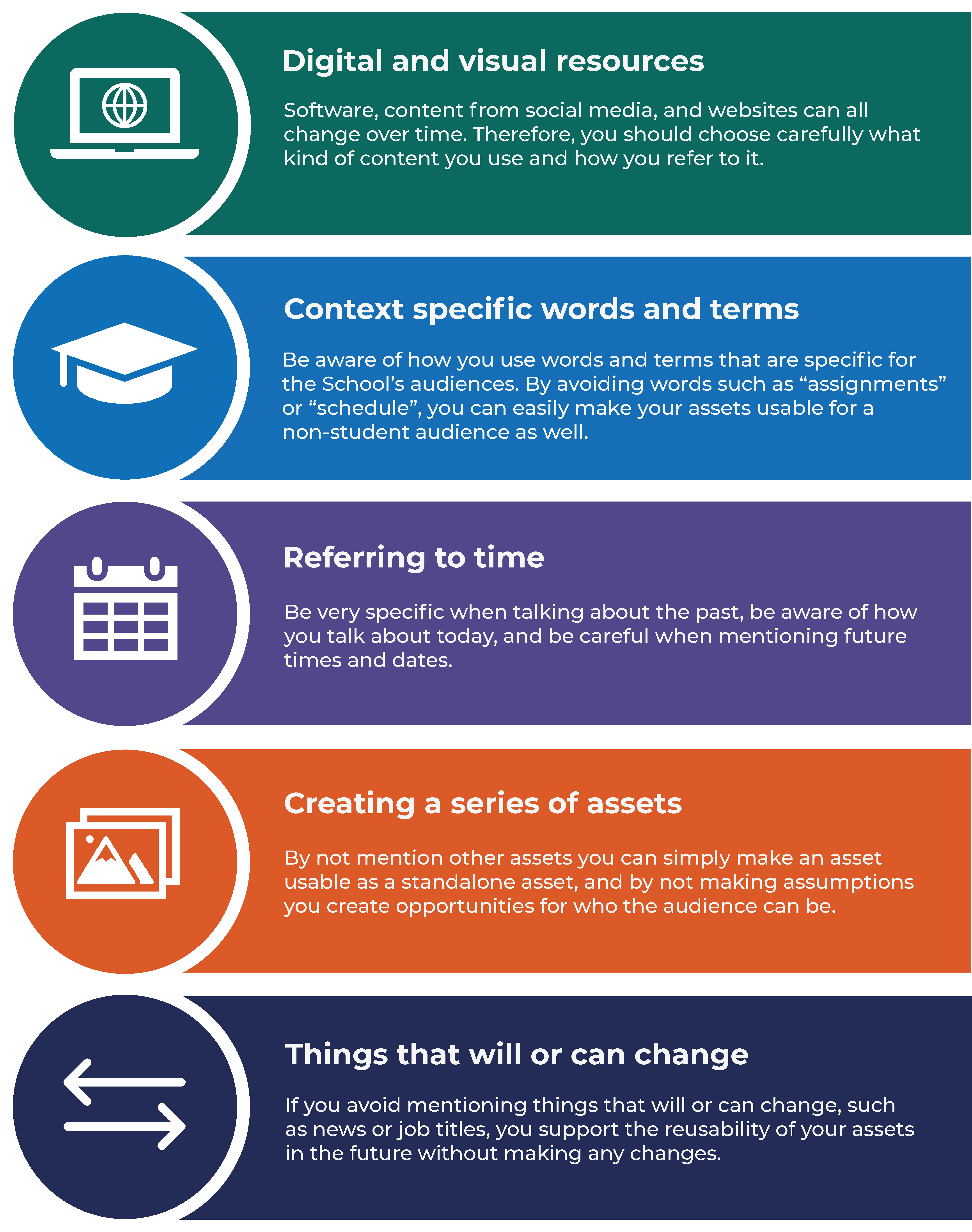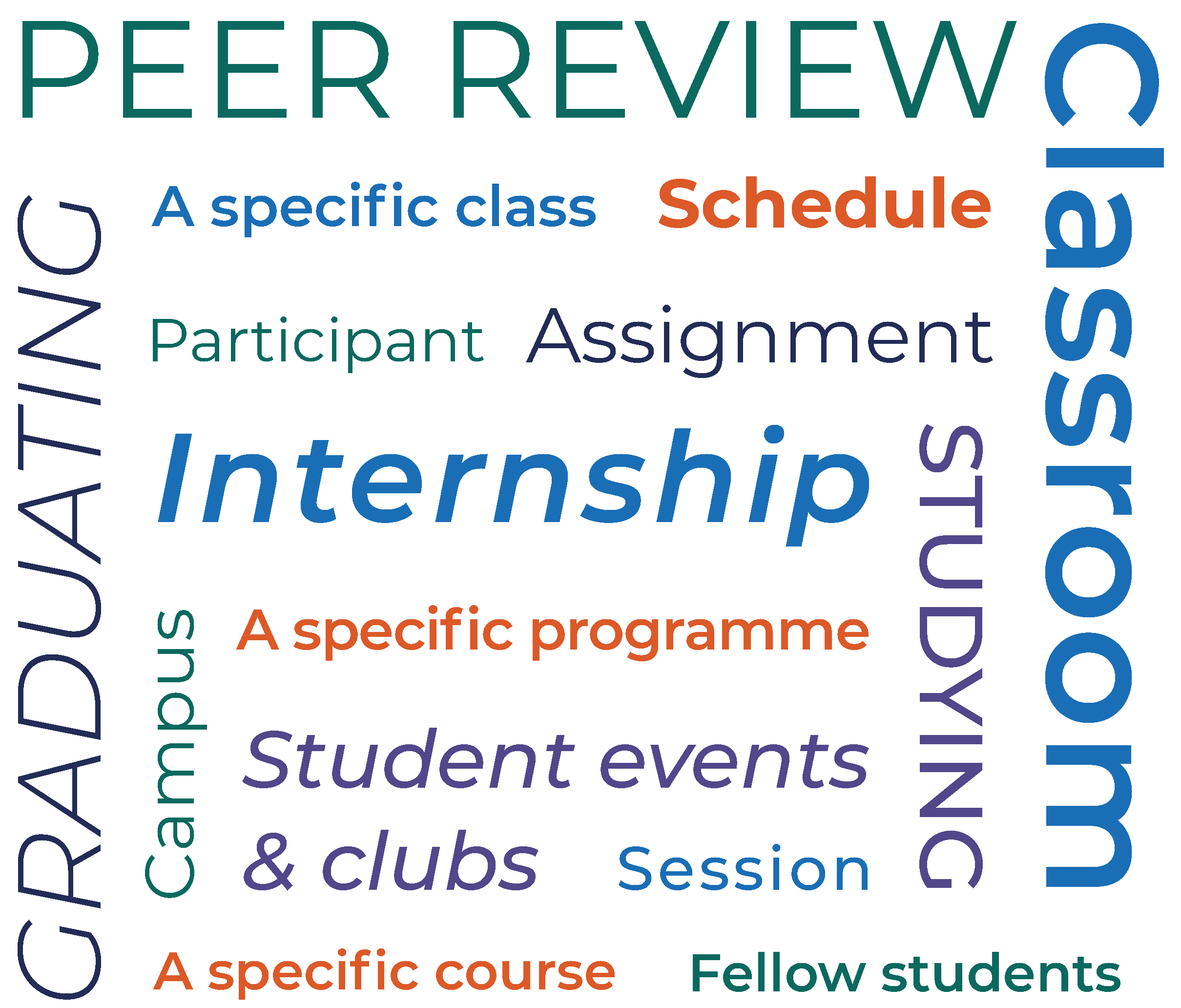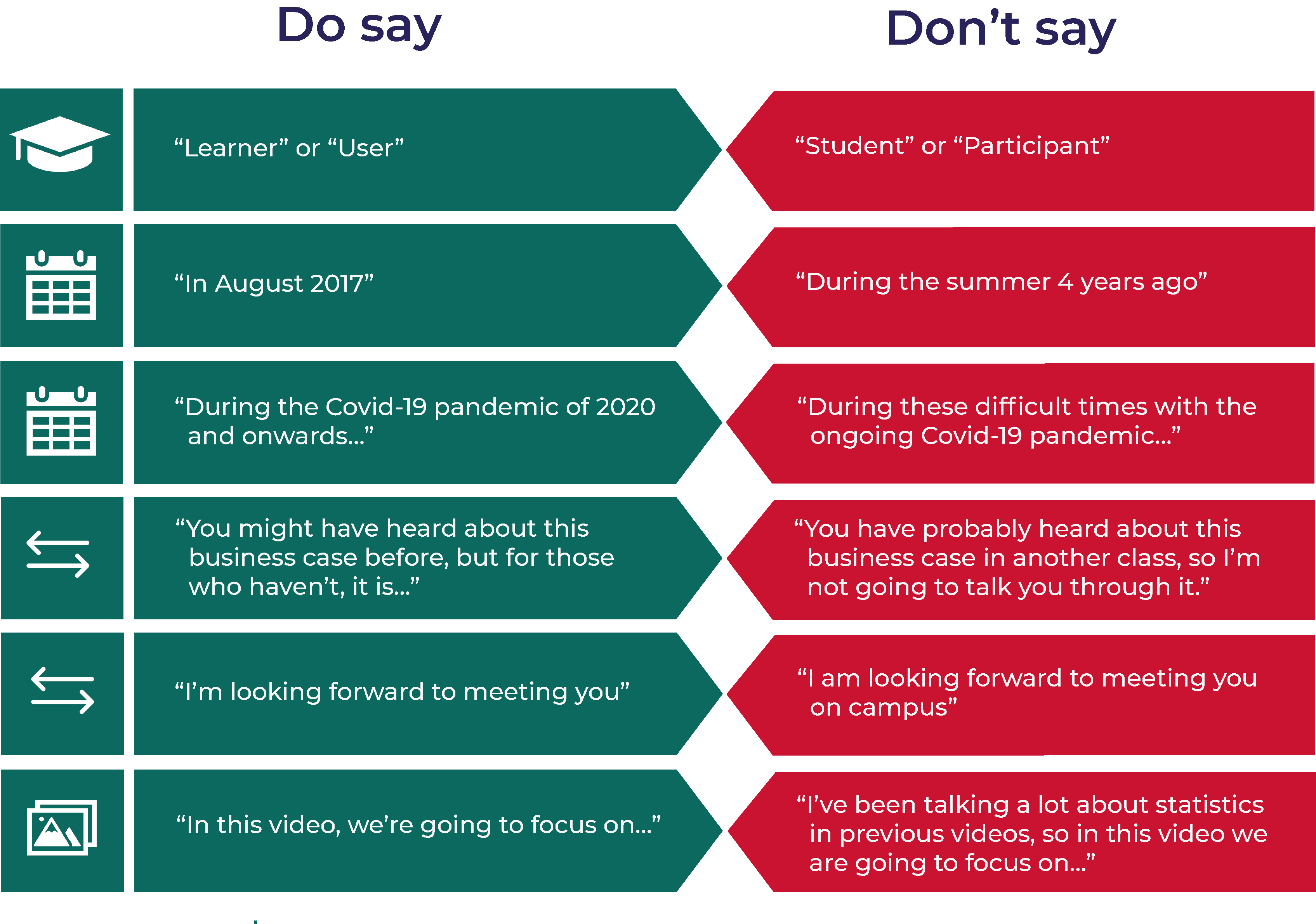Making your learning assets reusable
Tips to ensure assets with broad applicability can be reused effectively.
Making assets reusable enables them to be used with different audiences and in different contexts, both today and in the future. In this article, we provide tips on how to embed reusability practices that will save you time and support you to create sustainable learning products.
The following tips can be applied to assets such as videos, infographics, animations, and presentations. These include things to be careful when using, mentioning, or referring to in your content, to make sure you use a universal language and make your assets reusable.

Digital Imagery
- Trendy content from Social Media: A viral image or video from Social Media today might be forgotten within a few months.
- Software: Modern software is constantly updated or becomes redundant. Screenshots of specific examples quickly become out of date.
- Environmental footage: For example, taxi cars with company ads and logos
- Websites and links: These may be changed or deleted by the owner (with the exception of DOIs)
Context specific words and terms
Be aware of how you use words and terms that are specific within the different contexts of London Business School, such as:

For example, if you are creating a video and refer to “Students” then of course, within a degree programme we do have students. However, if you wish to use the asset within the Executive Education offering then you may be better off using the word “Learner”.
Referring to time
- Past: Be very specific about when and where events that you refer to took place. If possible, include the exact date and year.
- Present: Our community changes from day to day. If you refer to an event taking place today, then there’s a risk it will be over within a few weeks.
- Future: Things that are going to happen in the future can change quickly. So, don’t mention a specific year, month, day, or time an event will take place.
Creating a series of assets
If you are creating a series of assets, don’t refer directly to the other assets. This enables the assets to be used as standalone content in the future.
In addition, don’t assume that the learners already know about a specific asset, or concept – except in the case of defined prerequisite knowledge. For example, a specific business case may well be known to you, but your audience may not know it and therefore it may need some contextual explanation.
Things that will or can change
There are a lot of things that will and can change, both last minute or over longer periods of time.
- Positions and titles: The Associate Professor or Chief Executive Officer
- News: What is relevant news today may not apply in a few months/years
- Values: The value of pounds from dollars, or how much a company is worth
- Locations: In certain cases, you should be careful when mentioning a specific place in relation to an event. For example, it might change from Face-to-Face to Virtual.
In the infographic below you can find examples of phrases to avoid and alternatives that make an asset reusable.

The Digital Asset Register
Before you start creating an asset - look in the Digital Asset Register (DAR) to search existing assets that may suit your needs. The DAR is where you can find and use thousands of existing assets created by faculty in all departments across the school.
In the DAR, you can search for assets by name, faculty, date, topic, and subject. You can also preview the assets and send a request if you want to use a specific one.
For access and more information, contact learninginnovation@london.edu
Photo by Jan Piatkowski on Unsplash

